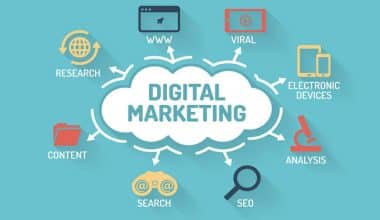Getting to know your target audience should be the first step in developing your digital marketing strategy. After all, how can you create campaigns that resonate with potential customers if you don’t understand who they are, what motivates them, and how they make purchasing decisions?
Getting Started With Market Research
Conduct thorough market research to identify demographics and psychographic details about your ideal buyers. Get as specific as possible when assembling buyer personas that represent your key customer segments. Understand both professional and personal characteristics – where do they work? What’s their role and income level? What are their interests, values and priorities in life?
Gathering these insights will allow you to craft tailored messaging that aligns with your audience’s preferences. For example, are they highly price-sensitive? Then make sure to highlight money-saving deals and discounts. Do they prioritize luxury or status? Promote the aspirational lifestyle your products can deliver.
Analyze Customer Data
You should also analyze available customer data to spot behavioral trends and patterns. Review past sales records, website analytics, ad campaign results and social media interactions. Every data point tells a story about customer engagement that you can use to optimize future efforts.
Map out a typical customer journey to purchase to identify key moments where you can have an influence. What online platforms and channels do they use most frequently? When do they typically enter research mode for a given product or service? How do external reviews sites factor into their decision making process? Plotting the buyer’s path will reveal critical touchpoints for your digital marketing strategy.
Optimizing Your Digital Presence
Once you have clarity on your audience, the next priority is ramping up visibility of your brand across digital channels. Your owned media properties – specifically your website and social media profiles – are gateways for attracting and engaging potential customers.
You can start with essential website optimization to bolster organic search visibility. On-page best practices like keyword-optimized titles, headers, content and image alt text help search engines better understand your pages and serve them up prominently in results for relevant queries.
Site speed also impacts search rankings and conversion rates. Quick load times enhance user experience and promote visitor retention compared to slow, clunky sites. Tackle bulky images, cached files and inefficient code to maximize performance.
Digital Marketing Importance
When developing a digital marketing strategy, it’s important to consider SEO services that specialize in your particular industry. For example, Smart Solar Marketing is an agency focused on helping renewable energy providers improve website traffic and visibility. Industry-specific experience translates to better optimization of copy, metadata, backlinks and other ranking factors unique to that niche.
In addition to SEO, an integrated online presence demands attention across other digital channels. Maintaining active social media profiles on highly trafficked platforms allows businesses to directly engage their audience while showcasing products, sharing resources and driving website visits.
Email marketing integration similarly nurtures leads, retains customers and increases repeat business. Collecting email addresses enables personalized, automated campaigns sending tailored content and deals timed to each subscriber’s stage in their buyer’s journey. Marketing automation takes personalization further by tracking digital body language across channels, allowing for fully customized sequencing based on individual interests and activity.
A comprehensive digital strategy requires specialized support across key channels like industry-focused SEO, social media engagement, email capture and marketing automation. Dedicating resources to each component ensures cohesion in messaging and positioning while directly addressing how and where your audience actively interacts online. The deeper the integration, the more visibility and traffic from high-quality leads you can achieve.
Creating Compelling Content
Content is the fuel that will feed all your digital marketing efforts, so it’s imperative you create stellar assets optimized for conversion. Personalized content resonates deepest with audiences by addressing their specific needs or interests.
Conduct audience research to identify the most pressing questions and pain points your customers face, then develop guides, ebooks and blog posts directly answering those issues. This valuable content earns attention and trust.
Engaging copy and visual formats also help relay your messages memorably. Play with different content types like videos, quizzes, polls and even AR experiences to capture interest. Photos and illustrations should visually reinforce key points.
Driving Targeted Traffic
Creating remarkable content is only the first step – next comes actively promoting it across digital channels through targeted campaigns. Paid search advertising displays your ads at the top of Google and Bing results when users search for relevant keywords. This positions you front and center before searchers as they enter research mode.
You can further retarget past site visitors through digital display ads across the web. So if a prospect leaves your online store without completing a purchase, dynamic banners with that item pop up on subsequent sites they browse as a reminder.
Both platforms allow setting audience filters like location, age range and interests to pinpoint your ads to prime candidates open to your offerings. Continually test and tweak your targeting over time to determine which customer segments deliver optimal ROI.
Tracking and Measuring Results
The most brilliant marketing strategy stumbles without consistent performance tracking enabling agile optimization. Start by defining essential campaign KPIs and conversion metrics aligned to business growth goals. Common benchmarks include clickthrough rate, cost per lead/sale generated and overall sales revenue driven by digital channels.
Ongoing A/B tests evaluate the impact of content variations to guide design and copy refinements. Try alternative headlines, cover images or gated content deal terms to discover which option moves the needle furthest on conversions.
Monitoring analytics dashboards provide instant snapshots on how site visitors, leads and sales pipeline momentum trend up or down week to week. Diving deeper into campaign reports reveals engagement rates across multiple online channels, highlighting those delivering the juiciest returns.
As a general rule of thumb, aim to assess digital marketing performance at least quarterly if not monthly. Schedule reviews to check if monthly targets defined at the start of the year remain on pace or need mid-course correction.
Continuous Optimization
Digital marketing success rests upon the foundation of constant listening and improvement. Regularly collect direct customer feedback through surveys, interviews and focus groups. What parts of their brand experience do they find most valuable? What’s frustrating or confusing?
Probe for specific examples of disappointing or standout moments – these qualitative insights shed light on weaknesses and strengths that may not be evident in analytics alone. External benchmarks can also contextually highlight where critical gaps exist compared to competitors.
Use these findings to ruthlessly identify areas ripe for optimization across the customer lifecycle. Brainstorm fresh content formats, lead nurturing sequences or website navigation that better aligns with consumer needs. Guide strategy shifts using the voice of the customer.
Experimenting with enhancements over weeks and months ultimately compounds gains that vault your digital marketing performance to the next level. Resist complacency, remain curious and keep raising the bar throughout continual improvement.
Building Referral Pathways
Referral marketing creates exponential brand exposure and trust through word of mouth sharing between peers. Digital tools and techniques empower fueling these crucial personal recommendations.
Launch Business Review Campaigns
Proactively asking satisfied customers to review your organization on sites like Yelp or Google My Business seeds star ratings and positive feedback where prospective buyers will see it. Review manager software aggregates sites for easy monitoring and response capabilities alerting on urgent issues. Maintain momentum by launching targeted review requests after major purchases or positive customer engagements.
Showcasing specific customer success stories captures business challenges, solutions implemented and tangible results delivered. Pulling back the curtain earns trust demonstrating real work for real people.
Repackage written case studies as different formats like video testimonials for wider appeal. Prominent placement on websites, sales collateral and social channels enables supporters to voluntarily pass along convincing proof.
Automate Referral Requests After Purchases
Post-transaction is an ideal moment to request referrals from customers experiencing the benefits of partnering with your brand. Marketing automation enables timed messaging after 30/60/90 days checking satisfaction levels and asking for introductions to peers needing similar solutions. Small incentives can jumpstart viral sharing.
Future Proofing Business Growth
Digital spheres evolve at breakneck speeds, so remaining constantly vigilant and ready to adapt is mandatory for sustaining relevance. Keep an eye trained perpetually on the horizon scanning for rising opportunities while new threats emerge.
Closely Track Shifts in Consumer Preferences
Having an accurate pulse on macro-level changes undergoing within society allows quicker alignment to altered attitudes and priorities. Notice emerging conversations through social listening indicating new customer expectations require addressing. Regularly field updated consumer research surveys to benchmark movements happening since the last check-in. Link CX insights teams with sales/product groups translate signals into appropriate responses.
Social networks continuously launch new features and ad products at a head-spinning pace – last year alone saw over 500 updates across core networks. Dedicate resources for testing beta options early before opportunities become mainstream. Pioneering brands who capitalized on Instagram Stories and IGTV vertical video grew exploding follower bases well ahead of competitors.
Continually Strengthen CRM / MAP System Integrations
Marketing and sales technology should seamlessly exchange relevant data to execute coordinated nurturing sequences. Siloed communications produce fractured experiences. Ensure platforms share common taxonomies for tag segment alignment. Continually validate new contacts, custom field captures and activity data properly flows downstream for consistent visibility enabling tight cross-team orchestration.
Final Words
Implementing an expansive digital marketing blueprint guides customers seamlessly from initial awareness through consideration and ultimately drives sales conversions. Each element, from researching the audience needs to continually tracking outcomes provides another layer of acceleration. Approach your efforts as an integrated ecosystem tuned to learners and adapt based on real-world signals. With the right foundation built across critical capabilities covered today, your marketing machine will propel sustainable growth for the long-term.






